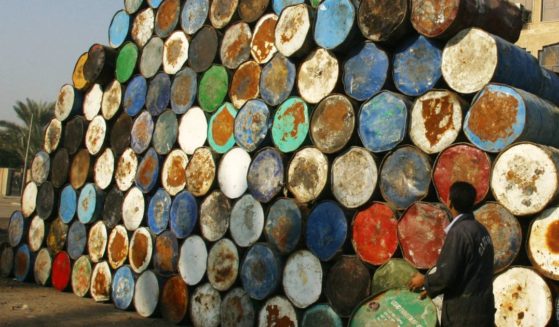Notre Dame fire shows the power of monuments to the French
STRASBOURG, France (AP) — Monuments are the emotional backbone of France. That accounts for the despair over a blaze that killed no one, yet seared the collective soul. It is the power Notre Dame had — still has, despite the charred scars on its Gothic walls.
It is not only the unique beauty of the Eiffel Tower in Paris, the palaces of Versailles or Mont Saint-Michel proudly facing the sea that make monuments the epitome of France — it is also the sense of nationhood they represent.
“It is the epicenter of our lives,” French President Emmanuel Macron said of the 12th-Century Cathedral.
“It is what we are,” added historian Camille Pascal on CNews.
When one such monument goes up in flames, the country weeps — literally in the case of another historian on national radio, even before the full extent of the damage became clear.
Across the nation, the pain was equally felt, especially because just about every region has a similar treasure to cherish.
In the eastern city of Strasbourg, which has an equally stunning cathedral made of red stone reminiscent of the glow the fire reflected on the towers of Notre Dame in Monday’s twilight, solidarity was immediate.
“All our heart is with Paris and Notre Dame,” the city said in a statement. Several European Union leaders were in town, gathering to address their legislature and discuss treaties, laws and regulations.
“The burning of the Notre Dame Cathedral has again made us aware that we are bound by something more important and more profound than treaties,” said EU Council President Donald Tusk early Tuesday.
For all, it was clear the monument transcended its religious meaning and instead was a symbol of European civilization.
For President Macron too, such is the aura of national monuments that his whole agenda was turned upside down in minutes. After months of violent protests by the yellow vest movement, on Monday evening he was finally to make a solemn televised statement from the Elysee on how to fix the nation’s social fabric.
No sooner had news of the fire spread than Macron canceled all plans for the TV address and he was heading over to the burning cathedral a few miles up the Seine river that slices Paris in two. The nation fully understood.
Instead of addressing social inequality he was announcing an immediate national fundraising campaign to restore the building.
“I tell you solemnly tonight: This cathedral, we will rebuild it, all together,” Macron said in front of the smoldering church. “Without a doubt it is a part of our French destiny.”
Since the church has become such a symbol of European culture, Tusk said the whole EU should help.
“I call on all 28 member states to take part in this task. I know that France could do it alone, but at stake here is something more than just material help,” he said.
France has had to come to the aid of its monuments before. With many churches and monuments ravaged by the 1789 revolution, Eugene Viollet-le-Duc inspired a restoration drive during the 19th century that left monuments from Notre Dame to Mont St. Michel and the walled medieval city of Carcassonne the envy of the world.
And at the same time, beyond providing national pride, he helped France become of the top tourist nations in the world, which now adds some 200 billion euros annually to the nation’s GDP.
The draw of the French monuments was already there when U.S. chronicler Mark Twain visited Notre Dame a century and a half ago.
Mischievously, he wrote in “The Innocents Abroad”: “We recognized the brown old Gothic pile in a moment; it was like the pictures.”
He continued: “We loitered through the grand aisles for an hour or two, staring up at the rich stained-glass windows embellished with blue and yellow and crimson saints and martyrs, and trying to admire the numberless great pictures in the chapels,” he said of some of the attractions.
That picture had endured through the decades since. It changed indelibly on Monday.
The Western Journal has not reviewed this Associated Press story prior to publication. Therefore, it may contain editorial bias or may in some other way not meet our normal editorial standards. It is provided to our readers as a service from The Western Journal.
Truth and Accuracy
We are committed to truth and accuracy in all of our journalism. Read our editorial standards.












